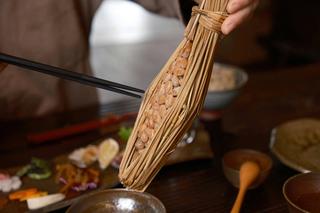How to Clean Shrimp for Asian Dishes

Want to challenge your seafood-handling skills? Time to know how to clean shrimp! As troublesome as it is to work with these raw, slimy crustaceans, nothing beats the taste of freshly caught and cooked shrimp. Once you get the hang of the cleaning process, you'll never return to the pre-prepared stuff again. Plus, you get to level up as a home cook!
How to Clean Shrimp: 2 Peeling Methods
When learning to clean shrimp, try different methods to see what works best for you. There are two ways to go about it based on the tools at your disposal. The first way is with your bare hands. The second is with kitchen shears.
Depending on the recipe you're following, you may need to keep or remove certain parts of the shrimp. For example, tempura recipes require removing the shrimp head while retaining the tail. Read through the recipe to ensure you don't throw away anything essential.
Before anything else, remember to wash up and prepare your tools. You'll need clean hands, a chopping board, scissors, and a small knife. Ready? Here's a guide to both methods.
Method 1: Use your hands.
- Start with the head. Pick the shrimp up with one hand and hold it with its legs facing you.
- Grip it underneath its head with your thumb and forefinger. Hold the body with your other hand. With your thumbs going up and forefingers going down, swiftly snap the body away from its head.
- Grab the legs and pull them off.
- Work your thumbs underneath the shell to crack it away from the body. Peel off and discard or save for stock. (One of the perks of peeling shellfish at home is getting to keep all the shells.)
- To remove the tail: pinch where it meets the body. Gently pull off.
Method 2: Use kitchen shears.
- Place the shrimp on your cutting board and cut the head off right behind where it meets the body.
- Pick the shrimp up along with your kitchen shears. Pierce the blade underneath the shell at the top of the shrimp (where the head used to be). Begin to cut along the outer curve towards the tail. Stop cutting when you get to it.
- Peel back the shell and legs from each side. Discard or set aside for stock.
- Leave the tail on or cut it with scissors.
Deveining Your Shrimp
Now that you've peeled your shrimp, you can start deveining. The shrimp’s “vein” isn't a vein in the truest sense but rather its intestinal tract. Although edible, it's visually unappealing and can be gritty in texture. It's always best to get rid of this vein when you spot it.
Start by making a shallow incision along the back of the shrimp with a paring knife or your kitchen shears. You should now see the black vein. Note that not all shrimp will have a vein, so move on to the next one if you find a shrimp without it. Use the tip of your blade to get under the vein and gently pull up to tug it out.
There you have it! Now you know how to clean shrimp before cooking. Ready to try shrimp-focused Asian recipes?
4 Restaurant-Style Asian Shrimp Recipes
Shrimp is the star ingredient in many Asian dishes and frequently appears on restaurant menus. Try any of these recipes to continue honing your shrimp-prepping abilities.
Shrimp toast
A specialty of Cantonese cuisine, this dim sum is easy to recreate at home. Toss peeled shrimp into a food processor with eggs, soy sauce, cornstarch, cilantro, sesame oil, and garlic. Pulse together until finely minced. Spread mixture onto a piece of toast, cut in half diagonally, coat in sesame seeds, and then deep-fry until golden. Enjoy with a sweet-chili dipping sauce!
Ebi tempura
This world-famous Japanese dish needs no introduction. Want a twist on the classic? Try a stuffed tempura complete with a wasabi-mayo dip. Make the stuffing by mashing crabmeat with a Knorr Shrimp Cube and pesto. Scoop up the mixture and load it into your prepared shrimp. Coat the shrimp in flour and breadcrumbs. Deep-fry until light and crispy.
Hot prawn salad
Hot prawn salad can be made with shrimp, too. Make it for a simple lunch or dinner, served with Chinese-style fried rice. Start with the creamy, sweet-savory sauce: mix Lady’s Choice Real Mayonnaise with condensed milk and pineapple chunks. Season with salt and white pepper. Let the mixture chill while your shrimp cooks. Prepare the peeled shrimp: coat in a cornstarch batter before frying. Toss the crispy shrimp and drained fruit cocktail in the mayo mix. Serve hot!
Laksa
Laksa is a spicy noodle soup enjoyed in countries across Southeast Asia. You can make this rich and comforting dish with one protein or a combination of several, like in this recipe. It features shrimp, tofu, and eggs, but you can also use squid or fish balls, chicken, or whatever else you have on hand. Perfect for cool days!
Now that you know how to clean shrimp properly, you can buy it fresh from the market without worries or regrets. Keep practicing, and you'll be a pro in no time.
Suggested Article

Japanese Natto: A Quick Guide
